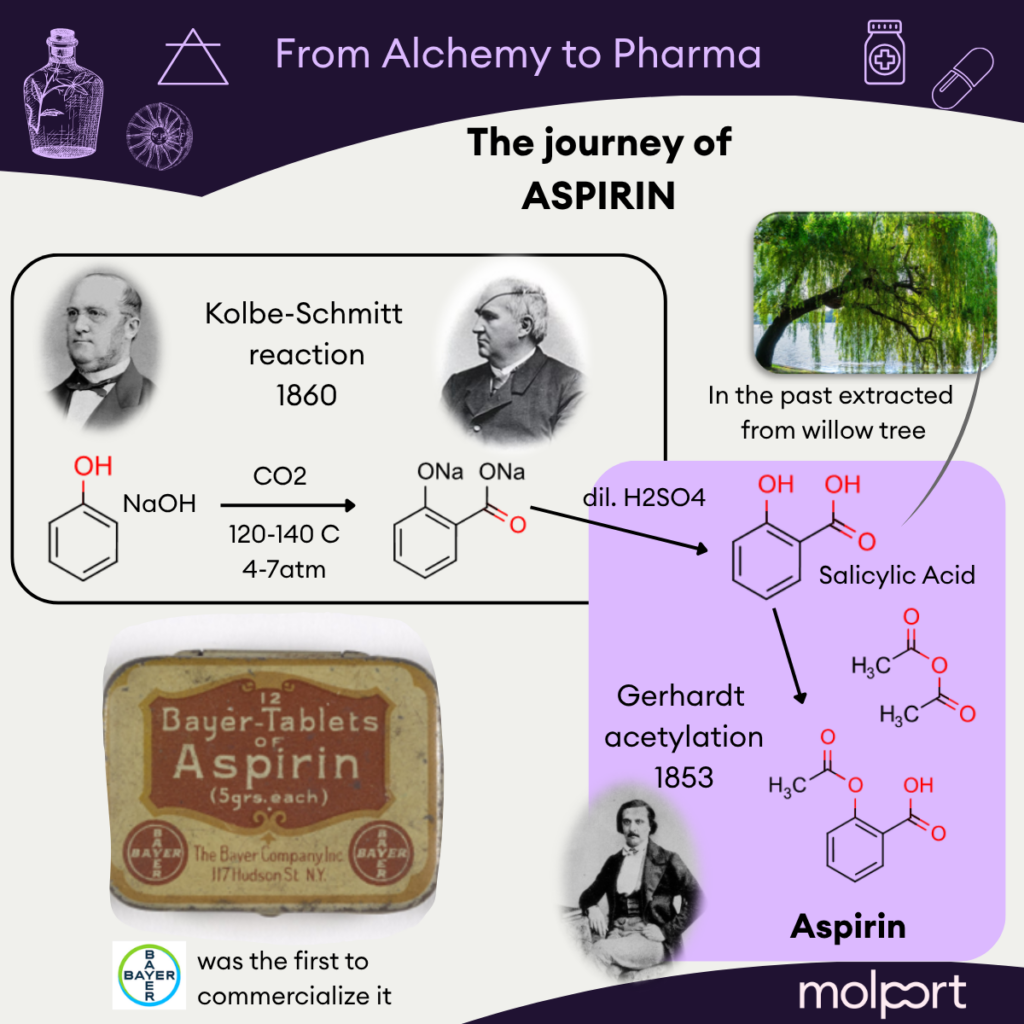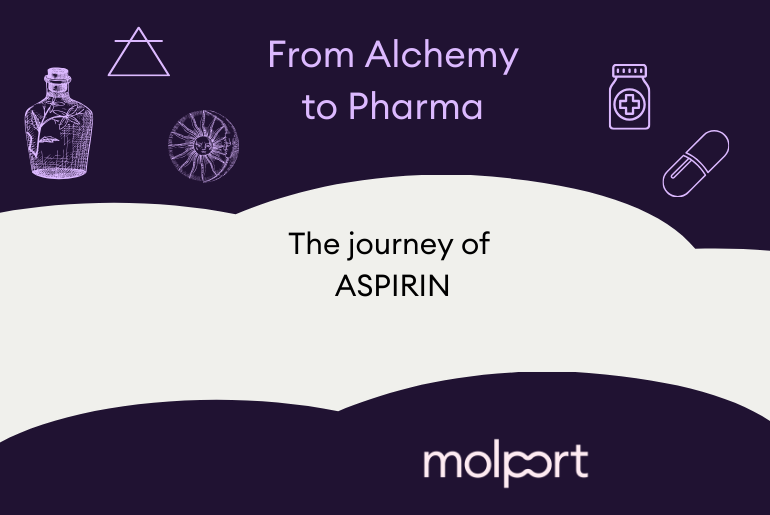The journey of ASPIRIN
The journey of aspirin spans millennia—from ancient herbal remedies to an industrial pharmaceutical icon.
Between 3000 and 1500 BC, Sumerians and Egyptians used willow bark to treat pain and inflammation. The Ebers Papyrus confirms its use as a natural analgesic. Around 400 BC, Hippocrates administered willow leaf tea to ease childbirth.
In 1763, Oxfordshire vicar Edward Stone documented willow bark’s fever-fighting effects to the Royal Society. By 1828, Joseph Buchner isolated salicin, the active component. Then, in 1853, Charles Frédéric Gerhardt synthesized acetylsalicylic acid (ASA), though without fully realizing its therapeutic value. This came thanks to centuries of herbal tradition kept alive partly by monastic communities, who long preserved plant-based medicinal knowledge.
A clinical trial in 1876 confirmed salicin’s efficacy in rheumatism. In 1897, Felix Hoffmann at Bayer, possibly guided by Arthur Eichengrün, chemically modified salicylic acid by acetylation to reduce stomach irritation—this was the birth of modern aspirin.
The key to scalable production came through the Kolbe-Schmitt reaction, developed earlier in the 1860s, which enabled the cheap and efficient industrial synthesis of salicylic acid from phenol and CO₂. This made aspirin widely accessible.
In 1899, Bayer became the first to commercialize acetylsalicylic acid as Aspirin: “A” for acetyl, “spir” from Spiraea ulmaria (meadowsweet), and “in” for the common drug suffix.
Finally, in 1971, John Vane uncovered its mechanism—prostaglandin inhibition—winning a Nobel Prize in 1982 alongside Bengt Samuelsson and Sune Bergström.
From monks and meadowsweet to mass production and medicine cabinets worldwide, aspirin is one of history’s most enduring and transformative drugs.

Other Molport Chronicles posts- from Alchemy to Pharma:





